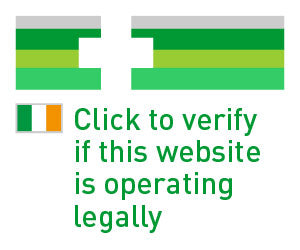Newborn Baby Care

Umbilical cord care
After your baby is born there will a small piece of the umbilical cord left, usually 2-3 cm. This will fall off in 5 – 15 days. However, before it falls off there are few precautions you should take to ensure it stays healthy and there are no infections.
- Practice good hand hygiene before and after touching the cord.
- Use cotton wool and cooled boiled water to clean around the base of the cord. Ensure the cord is dry after you’ve cleaned it.
- Make sure the nappy doesn’t cover the cord. You can fold the top of the nappy to ensure this is possible.
- Keep an eye on the cord and look out for any redness.
- If you notice any discharge or blood once it’s fallen off, contact your GP or midwife.
Nappy Rash
Nappy rashes are very common in babies, but some can suffer more than others. The rash may appear for a number of reasons including thrush infection, teething or a result of antibiotics, to something as simple as a wet or dirty nappy being left on too long. There are a number of reasons for a nappy rash:
- They’ve had a dirty or wet nappy on for too long
- The rough nappy is rubbing against them
- The soap or detergent is too harsh on their sensitive skin
- The wipes contain alcohol
- A thrush infection
- Teething
- If they’ve been on antibiotics recently
To help heal the rash you should follow the following steps:
- Use cotton wool and water to clean the baby’s skin. Make sure to pat their skin dry after each nappy change.
- Leave their nappy off for at least half an hour so the skin is exposed to fresh air.
- Ask your local LloydsPharmacy pharmacist for a recommended protective barrier cream. You can apply a thing layer of this to the rash.
- We would recommend avoiding bubble baths, talcum powder or scented products on your baby.
Colic
Colic is the term that applies to a baby that cries excessively and regularly for no reason and appears to be healthy. It’s not known why colic occurs, which for many parents can be very frustrating. However, colic is very common and can affect 1 in 5 babies.
Colic can start affecting a baby when they are between 2-4 weeks and last until they are 4-6 months old. The symptoms include:
- Crying for over 3 hours a day, for more than 3 days a week and over a period of 3 weeks.
- Difficulty comforting
- Red face
- Crying after they just settle
- Knees drawn up to chest
- Clenched fists
Unfortunately, there is no treatment for colic, but we have listed some suggested techniques that might work for your baby. Remember, each baby is different so not all babies will respond to each technique.
- Make sure your baby is sitting upright during feeds, and make sure to wind them afterwards.
- Cuddling and carrying your baby close to you can settle them.
- Try swinging or gently rocking your baby.
- Try giving them a warm bath.
- Ensure the environment around them is calming and quiet with dim lights.
- Gently massage your baby's tummy using circular motions. We recommend not doing this after a feed.
Reflux
Reflux is a common condition in babies, with up to 40% suffering from it. It occurs when your baby’s tummy contents leak back up into their mouth. It normally starts occurring around the 8 week mark but will improve while your baby’s oesophagus continues to develop.
Symptoms include:
- Bringing up milk during or after feeds.
- Refusing feeds, gagging or choking.
- Hiccups or coughing.
- Crying or not settling.
- Frequent ear infections.
We have listed some suggestions to help relieve reflux:
- Make sure your baby is sitting upright during feeds, and make sure to wind them afterwards.
- Try smaller and more frequent feeds.
- Make sure they sleep on their back.
Although the condition is common and, in most cases, not serious, there are some signs to look out for. If your baby suffers from any of the below problems, we recommend visiting your GP:
- Consistently spitting up feeds.
- Consistently refusing feeds.
- Coughing or gagging while feeding.
- None stop crying.
- Green or yellow vomit, or vomiting blood.
- Blood in their poo.
- Persistent diarrhoea.
- A swollen or tender tummy.
- A high temperature.
- Little to no weight gain, or weight loss.



